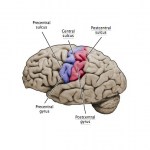DEPRESSION has long been associated with vision - and to colour perception in particular - and the link between them is evident in everyday language. Depression is, of course, often referred to as "feeling blue", and those who suffer from it are sometimes told to "lighten up". The link can be found in art, too - Picasso's so-called "Blue Period", for example, which was brought on by the suicide of his close friend Carlos Casagemas, is characterised by a series of striking paintings in shades of cold blue, which express the deep melancholy he felt at the time.
Although the association between…
neuroscience
From the archives...
Figure 1: Does Mickey feel empathy?
It probably depends on how you define empathy. Empathy, by any definition, implies emotional sensitivity to the affective state of another. Sometimes the empathy response is automatic or reflexive, like when babies start to cry upon hearing another baby crying. Sometimes a strong cognitive component is required, such as for compassion. A more specific understanding of empathy requires similarity between the affective states of the observer and the observed, with an understanding that the observer feels a certain way because he has…
DELETION of a single gene switches the sexual orientation of female mice, causing them to engage in sexual behaviour that is typical of males. Korean researchers found that deleting the appropriately named FucM gene, which encodes an enzyme called fucose mutarotase, causes masculinization of the mouse brain, so that female mice lacking the gene avoid the advances of males and try to mate with other females instead. The findings probably have little relavence to human sexual orientation, however.
FucM is one of a family of enzymes involved in rearranging the atoms in small sugar molecules…
MAGNETIC nanoparticles targeted to nerve cell membranes can be used to remotely control cellular activity and even the simple reflex behaviours of nematode worms, according to research by a team of biophysicists at the University of Buffalo. The new method, which is described in the journal Nature Nanotechnology, could be very useful for investigating how cells interact in neuronal networks, and may eventually lead to new therapies for cancer and diabetes.
Heng Huang and her colleagues synthesized manganese-iron nanoparticles, each just 6 millionths of a millimeter in diameter, and coated…
WHO could have guessed that a protein isolated from pond scum would transform the way researchers investigate the brain? The protein, called channelrhodopsin (ChR), is found in algae and other microbes, and is related to the molecule in human photoreceptors that captures light particles. Both versions control the electrical currents that constantly flow in and out of cells; one regulates the algae's movements in response to light, the other generates the nervous impulses sent along the optic nerve to the brain. Unlike its human equivalent, the algal ChR controls the currents directly because…
Late Wednesday evening, a terrible disaster began to unfold in the ScienceBlogs universe: word emerged that a zombie attack was taking place in our bloggers' homes. While the attack was believed to have begun somewhere in the southeastern United States, with patient zero Scicurious, it has now spread across the continent and even as far as Martin Rundkvist in Sweden. But even while in pursuit of human brains, the zombies are still dedicated to the mission of communicating science—in this case, getting the word out about the real science of zombiekind. To read up on how zombie epidemics spread…
Last week, my SciBling Jason Goldman interviewed me for his blog. The questions were not so much about blogging, journalism, Open Access and PLoS (except a little bit at the end) but more about science - how I got into it, what are my grad school experiences, what I think about doing research on animals, and such stuff. Jason posted the interview here, on his blog, on Friday, and he also let me repost it here on my blog as well, under the fold:
Here at Thoughtful Animal headquarters, we're starting a new series of seven-question interviews with people who are doing or have done animal…
Blame 'Night of the Living Dead' for this, but many people mistakenly think that zombies are nocturnal, going around their business of walking around town with stilted gaits, looking for people whose brains they can eat, only at night.
You think you are safe during the day? You are dangerously wrong!
Zombies are on the prowl at all times of day and night! They are not nocturnal, they are arrhythmic! And insomniac. They never sleep!
Remember how one becomes a zombie in the first place? Through death, or Intercision, or, since this is a science blog and we need to explain this scientifically,…
Imagine with me, for a moment, that the zombie invasion has begun. You try to escape, but the zombies are just too much to handle. You can't run fast enough. They're everywhere. Your favorite science bloggers have been turned into zombies and they're coming for you.
Figure 1: Thanks to Joseph Hewitt of Ataraxia Theatre for providing us with these awesome illustrations of zombified sciblings! Left to right: Christie, Sci, Bora, me, & Peter and Travis. Click on each to embiggen.
I'm sure you've always wondered what would happen as a zombie ate through your brain. How would it feel? What…
As this is a Zombie Day on scienceblogs.com, here is a re-post of one of my old post about one of the coolest parasites ever (from February 04, 2006):
I am quite surprised that Carl Zimmer, in research for his book Parasite Rex, did not encounter the fascinating case of the Ampulex compressa (Emerald Cockroach Wasp) and its prey/host the American Cockroach (Periplaneta americana, see also comments on Aetiology and Ocellated).
In 1999, I went to Oxford, UK, to the inaugural Gordon Conference in Neuroethology and one of the many exciting speakers I was looking forward to seeing was Fred…
FOR most of us, the ability to navigate our environment is largely dependent on the sense of vision. We use visual information to note the location of landmarks, and to identify and negotiate obstacles. These visual cues also enable us to keep track of our movements, by monitoring how our position changes relative to landmarks and, when possible, our starting point and final destination. All of this information is combined to generate a cognitive map of the surroundings, on which successful navigation of that environment later on depends.
Despite the importance of vision for navigation,…
There are some great questions coming in to Ask a Scienceblogger! If you (or your kids?) have a question you want answered by a scienceblogger drop by Page 3.14 (the blog of the SB overlordz) and leave your question in the comments on this post.
Tyler asked:
It's said that the left hemisphere of the brain controls the right half of the body and vice versa. Does this apply to the processing of audio and visual stimulus of the ears and eyes as well? Does the left half of the brain process what the right eye sees and vice versa?
There's actual a few questions in here, so let's break this apart…
Team USA's World Cup dreams may have been dashed by Ghana over the weekend, but there's nary a bad word to be said by the performance of its goalkeeper, Tim Howard, who again proved he's capable of hanging with his peers from the global soccer powerhouses. But besides his spectacular saves, the one thing World Cup coverage has brought to our attention is that Howard has Tourette's Syndrome, a disorder of the nervous system that causes involuntary movements and would seem to disqualify one from an occupation where precise muscle control is paramount. But as our neurobloggers David Dobbs and…
BRAIN implants containing microelectrodes are used widely in the laboratory and clinic, both to stimulate nerve cells and to record their activity. Researchers routinely implant electrode arrays into the brains of rodents to investigate the neuronal activity associated with spatial navigation, or into monkeys' brains to gain a better understanding of the mechanisms of motor control. As a result, we now have brain-computer interfaces that can help paralysed patients to communicate or control a prosthetic limb. Electrode arrays can also be used to assess vegetative patients, and to treat…
In the New York Times, a quick article on a study in the journal Neurosurgery by two Johns Hopkins professors. The abstract argues that Michaelangelo
concealed another neuronanatomic structure in the final panel of this series, the Separation of Light From Darkness, specifically a ventral view of the brainstem. The Separation of Light From Darkness is an important panel in the Sistine Chapel iconography because it depicts the beginning of Creation and is located directly above the altar. We propose that Michelangelo, a deeply religious man and an accomplished anatomist, intended to enhance…
THE dangers of obesity are very well known. Being overweight is associated with an increased risk of coronary heart disease and stroke, the two leading causes of death in the Western world. Gout is more common in overweight people, with the risk of developing the condition increasing in parallel with body weight. Obese people are twice as likely to develop type 2 diabetes as those who are not overweight, and being overweight is also associated with several types of cancer. The list goes on...
Less well known is the effect of obesity on the brain. In the past few years, however, it has…
The Science Channel debuted a new show last night, Through the Wormhole with Morgan Freeman, with the premier apparently designed by committee to piss off as many Internet types as possible. The overall theme was "Is there a creator?" and it featured physicist-turned-Anglican-priest John Polkinghorne talking about fine-tuning but no atheist rebuttal. It spent a good ten minutes on Garrett Lisi and his E8 theory, making it sound a whole lot more complete than it is. And it got this aggressively stupid review in the Times:
Oh, let's face it: it was hard to concentrate on the first half of the…
Andrew Carnie, Magic Forest, 2002, via Neuroculture.org
Â
Do we live in a neuroculture? Of course we do!
Coming from a blog named Neuron Culture, this is obviously a set-up question â my excuse to call attention to a post by Daniel Buchman that offers a brief review article on the question.
It seems that everywhere I look nowadays, Iâm seeing images of, or reading descriptions of, the brain in some shape or form.
Buchman links (at the post's bottom, as is now the practice at NCore) to several good reads and sites, including Neuroculture.org, which has some lovely stuff, and â curse…
TRICHOTILLOMANIA (or hair pulling) is a condition characterised by excessive grooming and strong, repeated urges pull out one's own hair. It is classified as an obsessive-compulsive disorder (OCD), and is relatively common, affecting about 2 in 100 people. Sufferers normally feel an increasing sense of tension before pulling out their scalp hair, facial hair, and even pubic hair, eyelashes or eyebrows. This provides gratification, but only briefly.
Hair pulling is usually thought of as being psychological in origin, but an intruiging new study now suggests that it occurs as a result of…



